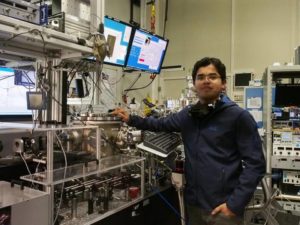No products in the cart.
Indian scientist discovers revolutionary technique, makes computer one million times faster
How many of you know that a list of 1,000 scientists from all over the world was recently released. Unfortunately, only 3 Indian scientists managed to secure a place in the rankings. The scenario is indeed piteous for the country, however the question being raised is- why our country is very poor in the area of science? Well, there might be a variety of reasons. A major reason is overlooking the contributions of our scientists and researchers.
Most of the kids at the age of 10 or more can name at least 20 movie actors with ease, but they can hardly name 3 Indian scientists, if asked. In a way, we discourage scientific atmosphere in our society. In the article, I will tell you the story of a young Indian scientist– Manish Garg- whose work is likely to be a breakthrough in computer world. But Indian media has apparently failed to give coverage to the story. On the other hand, World’s biggest science magazine has featured our hero in their edition.

Manish and his team worked tirelessly for years, at the Max Planck Institute of Quantum Optics in Garching, Germany, discovered a technique which can boost up the speed of computers worldwide by 1,000,000 times. His discovery will not only reshape the future of computer once and for all, but also works, which depend on the intelligent machine, could get million times faster.
How Manish did it?
In a German University, Manish Garg, along with his team, used silicon dioxide to move electrons at a historically high speed. Silicon dioxide is naturally insulator, in which electrons don’t move and consequently current doesn’t flow. But Manish exposed the insulator to an intense ruby laser, electrons started moving inside, achieving one million billion oscillations in one second, which is a million times faster than our scientists had achieved thus far.
“Light waves are electromagnetic in nature and have very high oscillation frequency of electric and magnetic fields. This ultra-high frequency of light waves can be used to drive and control electron motion in semiconductors. Electronics, when driven by such light waves, will be inherently faster than current state of electronics,” says Dr. Garg, who is the first author of the paper.












